CT Grognard
Posts: 694
Joined: 5/16/2010
From: Cape Town, South Africa
Status: offline

|
There have been significant complaints from Allied players about how ineffective Allied (and especially US) combat ships seem to be versus IJN surface vessels in the early part of the war.
Is there a justification for this perception? What does history indicate?
I'll try to provide a summary of real-life surface engagements in the early Pacific War:
Battle of Balikpapan
24 January 1942
Calm/moonless night. Japanese ships backlit by onshore oil fires and hidden by heavy smoke from fires/rough in approach, but calm at time of action.
USA tactical surprise.
The first US surface engagement since the Spanish-American War. DD John D. Ford, DD Pope, DD Parrot and DD Paul Jones managed to surprise a Japanese amphibious task force just off of Balikpapan during nighttime. The Japanese escort of CL Naka, DD Minegumo and DD Natsugumo had left the amphibious ships shortly before (actualling steaming right past the US destroyers, probably mistaking them for friendly forces), searching for a Dutch submarine, and took no part in the battle.
The 12 Japanese transports were perfectly lined up and silhouetted against burning oil storage tanks. 48 torpedoes were launched by the US DDs, only six struck targets. Four Japanese transports and one patrol craft was sunk. Only damage to US forces before they disengaged was a shell hit on DD Ford's aft deckhouse. Later, DesDiv 59 criticised for only 6 out of 48 torpedoes striking stationary, "sitting duck" targets - primary factors given are "lack of experience, a hasty approach and/or defective torpedoes".
Battle of Badoeng Strait
18 February 1942
Dark, cloudy, calm.
ABDA tactical surprise.
Two Japanese transports, escorted by CL Nagara, DD Wakaba, DD Hatsushimo, DD Nenohi, DD Oshio, DD Asashio, DD Arashio and DD Michishio landed troops on Bali. Allied B-17 attacks damaged both transports.
Adm Doorman devised three waves to attack this task force during nighttime: Group 1, CL De Ruyter, CL Java, DD Piet Hein, DD Pope, DD John D. Ford; Group 2, CL Tromp, DD Stewart, DD Parrott, DD John D. Edwards, DD Pillsbury; Group 3 - 9x Dutch MTBs.
The Japanese were trying to leave Bali as soon as possible. CL Nagara, DD Wakaba, DD Hatsushimo and DD Nenohi had already steamed a significant distance towards Makassar. The transport Sagami Maru escorted by DD Arashio and DD Michishio had departed Bali shortly before the action, while Sasago Maru with escorts DD Asashio and DD Oshio were just getting underway when the first ABDA strike group arrived just before midnight.
The first encounter was between CL De Ruyter, CL Java and DD Oshio and DD Asashio - the Dutch achieved tactical surprise as they steamed up the strait at high speed. All four ships lit up the night sky with searchlights and starshells, but no hits were scored as they passed each other at high speed. The two Japanese destroyers then engaged DD Piet Hein, sinking her with a Long Lance and shell hits. They next engaged the US destroyers DD Pope and DD John D. Ford, they traded shots for six minutes, no hits were scored but the Japanese gunfire was accurate enough to persuade the US destroyers to disengage to the south and fail to follow the Dutch cruisers to the northeast.
The second ABDA group of CL Tromp and four US DDs again achieved tactical surprise but failed to exploit it. No torpedo hits were scored by any of the US destroyers on the Japanese ships in the anchorage. DD Oshio and DD Asashio again sortied against them. The two Japanese destroyers replied with rapid and accurate fire against the four US destroyers, DD Stewart was hit twice. The aggressive Japanese defence caused the four US DDs to turn back to the south. The two Japanese destroyers followed them, DD Parrott and DD Pillsbury almost collided, with DD John D. Edwards forced to veer to starboard to avoid DD Parrott. DD Pillsbury fell out of the column while DD Parrott ended up off on her own north of DD Stewart and DD John D. Edwards. DD Asashio and DD Oshio cut in behind DD Stewart, DD Parrott and DD John D. Edwards, placing them between these three destroyers and CL Tromp and DD Pillsbury. DD Asashio hit CL Tromp with eleven shell hits, with Tromp scoring a hit on DD Oshio and DD Asashio each.
DD Parrott later briefly ran aground. DD Arashio and DD Michishio arrived and found themselves at close quarters between DD John D. Edward and DD Stewart on their starboard beam and CL Tromp and DD Pillsbury on their port beam. DD Michishio was hammered by DD Pillsbury, DD John D. Edwards and CL Tromp.
End result: CL Tromp badly damaged, DD Piet Hein sunk, DD Stewart badly damaged. DD Michishio badly damaged, DD Oshio moderately damaged, DD Asashio lightly damaged. Two Japanese DDs fought off first two CLs and three DDs, and then a CL and four DDs.
Battle of the Java Sea
27 February 1942
Daylight, later night. Fair weather, good visibility, moderate swells.
No surprise.
Japanese amphibious force was approaching Java, escorted by a powerful Japanese task force - CA Nachi, CA Haguro, CL Naka, CL Jintsu, DD Yudachi, DD Samidare, DD Murasame, DD Harusame, DD Minegumo, DD Asagumo, DD Yukikaze, DD Tokitsukaze, DD Amatsukaze, DD Hatsukaze, DD Yamakaze, DD Kawakaze, DD Sazanami and DD Ushio.
An ABDA strike force of CA Exeter, CA Houston, CL De Ruyter, CL Java, CL Perth, DD Electra, DD Encounter, DD Jupiter, DD Kortenaer, DD Witte de With, DD Alden, DD John D. Edwards, DD John D. Ford, DD Paul Jones engaged this Japanese escort.
During the first phase of the battle, gunnery and torpedo accuracy by both sides was poor. CA Exeter was critically damaged by an 8-in shell hit in the boiler room, limping away from the battle escorted by DD Witte de With. A massive Japanese torpedo salvo (92 torpedoes) was launched, only one, a Long Lance, hit DD Kortenaer which broke in half and sank. DD Encounter picked up survivors from the Kortenaer and retired from the battle. DD Electra scored some hits on CL Jintsu and DD Asagumo, but was in turn seriously damaged to the extent that, on fire and out of ammunition, she was abandoned. DD Asagumo, damaged by several hit, retired from the battle.
The Allied fleet broke off under cover of a smokescreen, launching a torpedo attack but at too long a range to be effective. Out of torpedoes, the four US destroyers left on their own initiative to return to Soerabaja. That night, DD Jupiter hit a mine and sank. The Allied force, down to CA Houston, CL de Ruyter, CL Java, and CL Perth, encountered the Japanese task force again at 23:00 at long range. CL De Ruyter and CL Java were sunk by one devastating Long Lance torpedo salvo. The two survivors, CA Houston and CL Perth, low on fuel and ammunition, retired from the battle.
Allied losses were two light cruisers and two destroyers (excluding Jupiter sinking to a mine) against Japanese losses of one damaged destroyer. A number of factors were cited for these disparate losses:
The Japanese task force had 25% more guns of 4" or more, and 63% more guns of 5" or more, and 44% more torpedo tubes. Also, the Japanese Long Lance was a fearsome weapon that massively outranged Allied torpedoes. Japanese ships could also reload torpedoes quicker. In addition, the American torpedoes were often defective. Furthermore, morale in the Allied fleet was low due to continued air attacks, accidents, and general wear-and-tear, and in general the crews were heavily fatigued. The ships were lacking maintenance and in some cases were damaged. There were also organisational problems since the ships came from four different navies, and two different languages were spoken.
That being said, only three Japanese torpedoes out of 152 torpedoes launched hit Allied targets (DD Kortenaer, CL De Ruyter, CL Java).
Battle of Sunda Strait
28-29 February 1942
Nighttime. Clear, full moon, calm.
Japanese tactical surprise.
Following the Battle of the Java Sea, CA Houston and CL Perth, accompanied by DD Evertsen, sailed through the Sunda Strait. By chance at the same time a Japanese invasion convoy was entering Bantam Bay, near the NW tip of Java, escorted by CA Mogami, CA Mikuma, CL Natori, DD Harukaze, DD Hatakaze, DD Asakaze, DD Fubuki, DD Hatsuyuki, DD Shirayuki, DD Shirakumo, DD Murakumo and DD Shikinami.
At 23:00 the Allied ships were sighted by DD Fubuki and surreptitiously followed for a few minutes. CL Perth then spotted a ship which she challenged and turned out to be a Japanese DD which fired nine Long Lance torpedoes, none of which hit. A ferocious night action ensued over the next hour. CL Perth was sunk first by gunfire and torpedo hits. CA Houston was hit by four torpedoes after midnight, rolling over and sinking. CA Mikuma, DD Shirayuki and DD Harukaze all suffered light damage. Four Japanese transports and a minesweeper were sunk by friendly fire - some 90 Long Lance torpedoes were launched. Two of the Japanese transports were later refloated.
DD Evertsen, arriving an hour after CA Houston and CL Perth, attempted to avoid the battle but encountered DD Murakumo and DD Shirakumo on the southern side of Bantam Bay. She was engaged and tried to flee under cover of smokescreens, eventually her stern was set on fire. The captain of the DD Evertsen then decided to beach the destroyer on a coastal reef, whereafter they fired all their torpedoes and then abandoned ship before the fire reached the aft magazine, causing an explosion blowing off most of the stern.
Second Battle of Java Sea
1 March 1942
Daytime. Initially clear and sunny, then light squalls, excellent visibility.
No surprise.
The heavily damaged CA Exeter, escorted by DD Encounter and DD Pope, left Soerabaja on the evening of 28 February with the intention of making for Ceylon. The Allied task force were making 23 knots, as fast as CA Exeter could manage. In the morning of 1 March 1942, the Allied ships spotted ships and tried to avoid contact. Eventually they were boxed in by two sets of Japanese warships, comprising CA Nachi, CA Haguro, CA Ashigara, CA Myoko, DD Akebono, DD Ikazuchi, DD Kawakaze and DD Yamakaze. A long-range gunnery battle ensued. CA Myoko and CA Ashigara expended a total of 1,171 8-in shells at long range, with none hitting. CA Exeter, eventually slowed down to 4 knots by a major hit in her boiler room, was racked by gunfire and brought to a standstill, torpedoed, and sunk. DD Encounter and DD Pope tried to make a run for it, DD Encounter was hit by an 8-in shell and sank, but DD Pope reached a rain squall and was lost to sight (but was later that day spotted by Petes from CS Chitose and sunk by Kates from CVL Ryujo).
During this battle the Japanese expended 2,650 shells and 35 torpedoes to sink three American ships.
< Message edited by CT Grognard -- 2/17/2012 11:10:05 AM >
|
 Printable Version
Printable Version




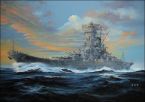

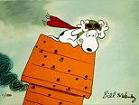





 I mean, thats a good start. Quite often the Allies don't actually get that far...
I mean, thats a good start. Quite often the Allies don't actually get that far...
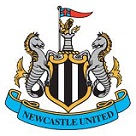
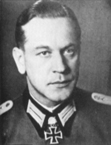
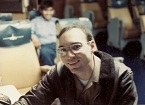


 New Messages
New Messages No New Messages
No New Messages Hot Topic w/ New Messages
Hot Topic w/ New Messages Hot Topic w/o New Messages
Hot Topic w/o New Messages Locked w/ New Messages
Locked w/ New Messages Locked w/o New Messages
Locked w/o New Messages Post New Thread
Post New Thread